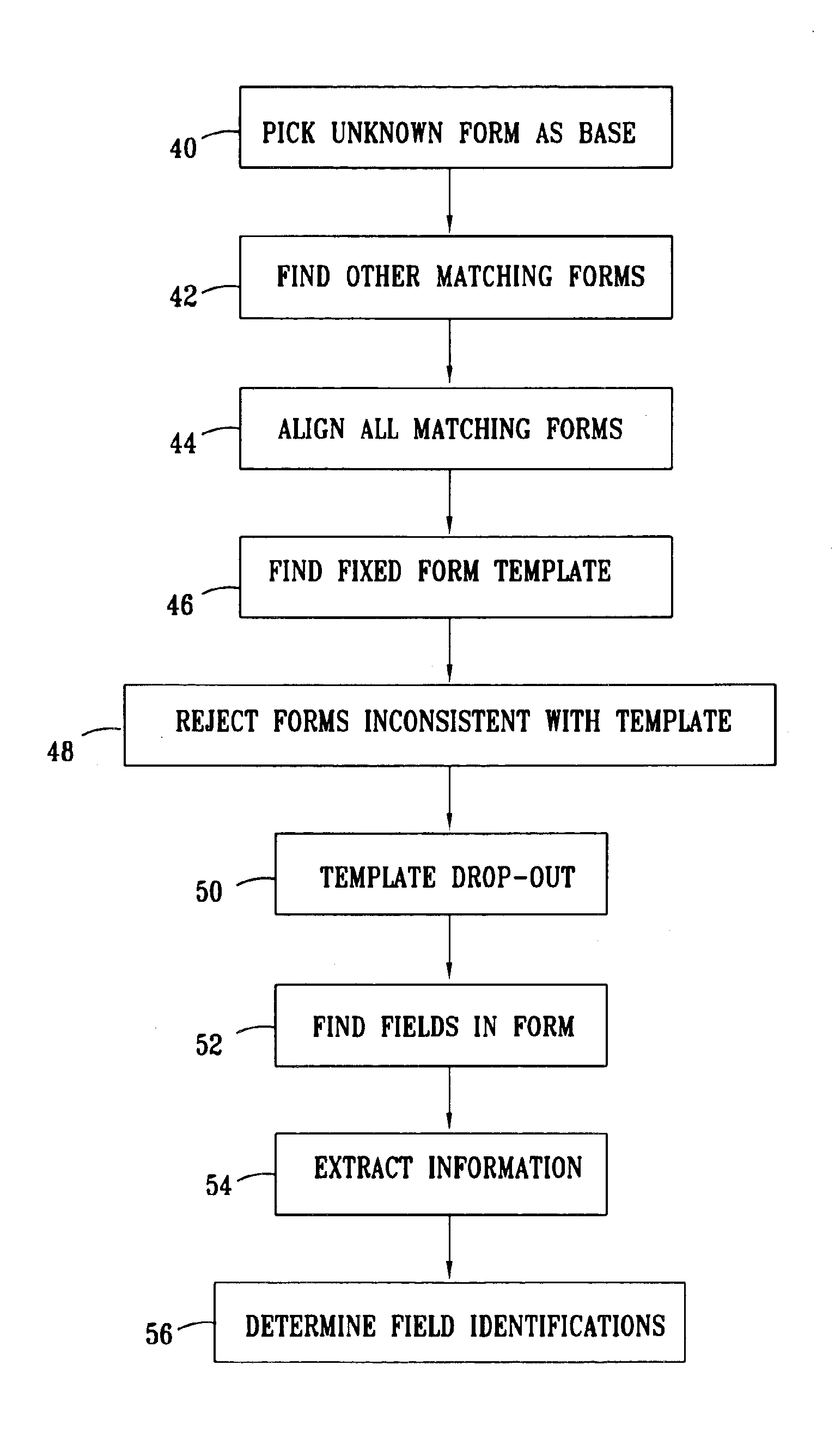Automatic template and field definition in form processing
a template and field definition technology, applied in the field of document image processing, can solve problems such as human operator involvement, unexpected variations, and not all template or template variations are known
- Summary
- Abstract
- Description
- Claims
- Application Information
AI Technical Summary
Benefits of technology
Problems solved by technology
Method used
Image
Examples
Embodiment Construction
[0048]FIG. 1 is a schematic, pictorial illustration of a system 20 for processing of form document images, in accordance with a preferred embodiment of the present invention. System 20 comprises a scanner 22, or any suitable type of image capture device known in the art, which receives and scans a document 24 comprising a preprinted form, which is typically filled in with handwritten, typed or printed characters. The scanner captures an image of the document and conveys the corresponding image data to a form processor 26, typically comprising a suitable general-purpose computer. Alternatively, the image is input to the processor from another source. Processor 26 attempts to register the document image with one of a plurality of reference template images that are stored in a memory 28, such as a magnetic or optical disk. The registered template is used to identify the fields in document 24. Preferably, the processor removes the template from the document image and reads out the chara...
PUM
 Login to View More
Login to View More Abstract
Description
Claims
Application Information
 Login to View More
Login to View More - R&D
- Intellectual Property
- Life Sciences
- Materials
- Tech Scout
- Unparalleled Data Quality
- Higher Quality Content
- 60% Fewer Hallucinations
Browse by: Latest US Patents, China's latest patents, Technical Efficacy Thesaurus, Application Domain, Technology Topic, Popular Technical Reports.
© 2025 PatSnap. All rights reserved.Legal|Privacy policy|Modern Slavery Act Transparency Statement|Sitemap|About US| Contact US: help@patsnap.com



